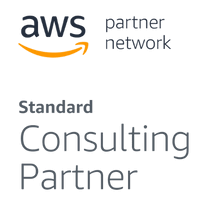How Do You Assess Your Organization’s Cloud Readiness & Maturity Level?
May 23, 2024
Transitioning to cloud technology is a pivotal step for any organization aiming to enhance its operational efficiency and scalability. However, this shift requires a thorough assessment of your organization’s readiness and maturity level in the cloud domain. This process begins by understanding where your organization currently stands, identifying the gaps in your existing infrastructure, and outlining a strategic path towards a successful cloud adoption. Read on to learn more.
Understanding Legal and Compliance Requirements
The First Step: Compliance
Before you can even begin to map out a cloud strategy, understanding your legal and compliance requirements is imperative. For instance, if your organization handles personally identifiable information (PII) or protected health information (PHI) and is required by law to store data within the continental United States, your cloud solutions will look different than those of a company without such data. Similarly, entities in the defense sector face stringent compliance standards that significantly influence their cloud architecture and services. Recognizing these requirements upfront will set the stage for a cloud transition that not only enhances capabilities but also adheres to necessary legal standards.
Deciding between Lift and Shift or Rewrite
Evaluating Application Suitability
One of the most critical decisions in your cloud migration strategy is choosing between lifting and shifting your existing applications or opting for a complete rewrite. This decision can have significant cost and time implications. Migrating on-premise software directly to the cloud without modifications can lead to inefficiencies and increased expenses—akin to fitting a USB-C into a USB-A port; they simply don’t match. Therefore, it’s essential to evaluate the architecture of your current systems and determine if they can be adapted to cloud environments or if rewriting them would yield better performance and scalability.
Understanding the Technical Aspects
Getting Technical: Infrastructure Considerations
The technical assessment of your cloud migration involves a thorough examination into your existing IT infrastructure to identify what can be moved to the cloud and how. It involves critical decisions about database management—whether to use NoSQL or relational databases—and understanding the messaging systems like Pub/Sub or RabbitMQ. Each element requires careful consideration to ensure compatibility with cloud technologies, guaranteeing that your move is both effective and efficient.
In Summary: Tailored Strategies for Effective Cloud Migration
There is no one-size-fits-all formula when it comes to cloud migration. Every organization requires a tailored approach that accounts for its unique challenges and strengths. This is why working with a partner who can truly understand your needs and help leverage cloud technology in a way that aligns with your business objectives is vital. Such customization ensures that the cloud solutions implemented not only resolve current issues but also scale to meet future demands.
If you need further guidance on how to assess your organization’s cloud readiness & maturity level, contact us today. We’re here to help you manage this critical transition with confidence and strategic insight.
More From Keyhole Software
About Keyhole Software
Expert team of software developer consultants solving complex software challenges for U.S. clients.








